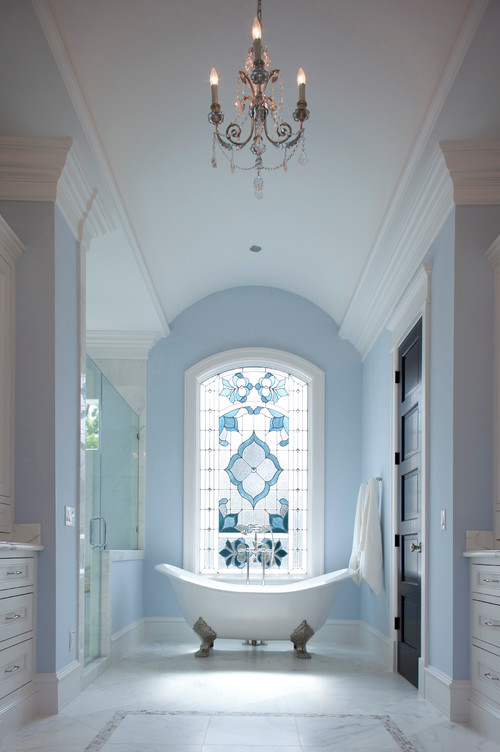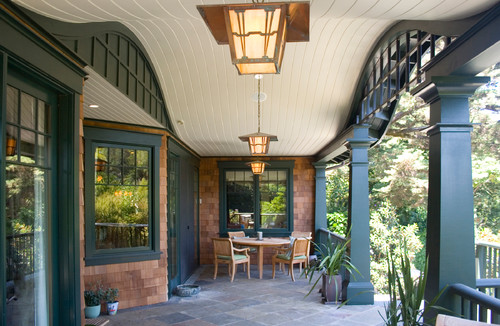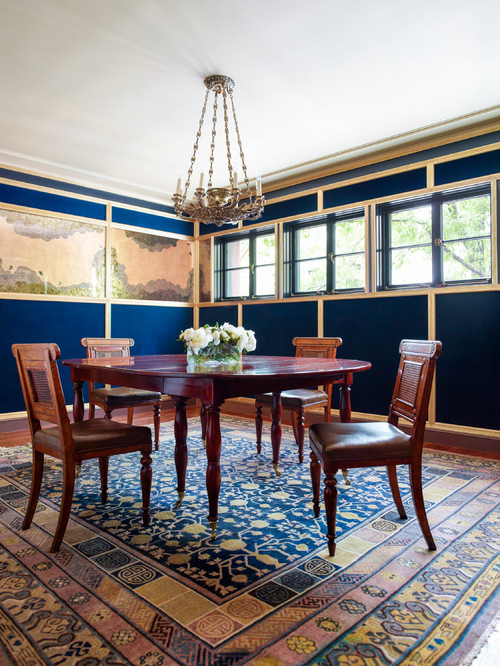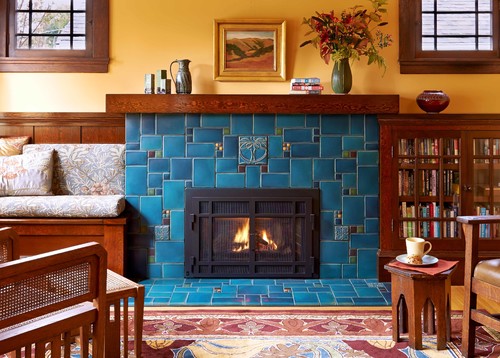
Education Images/Citizens of the Planet/Universal Images Group via Getty Images
Arts and Crafts is more than just a preschool activity—and if you’ve ever swooned over the homes by architect William Morris, then you know the gorgeously detailed aesthetic we mean.
But for the rest of us, the name can be a little confusing. So what exactly is the Arts and Crafts movement, and where the heck did it come from? We talked with top designers to find out. Here are all the details on this architectural style you need to know.
The Arts and Crafts movement defined
The Arts and Crafts movement arose as a response to the rise of industrialism at the turn of the 19th and 20th centuries.
“Artists, designers, architects, and other creative people wanted to resist the mass-produced products and what they perceived as the negative impact on the individual,” says designer Pablo Solomon.
So they created a style of design and architecture that emphasized human craftsmanship and the connection of everyday objects with the natural world.
“The movement embodied nature, detail, beauty, and simplicity,” says designer Amanda Gates. “There are two houses that best represent the Arts and Crafts movement, the Gamble House [built for the executive of Procter & Gamble) and the Red House [the residence of William Morris].”
According to Gates, Morris was one of the first to really take into account the effects that a home’s design could have on its occupants.
“He recognized that a home’s interior could be uplifting and affect our mood,” says Gates. It was “quite revolutionary for the time.”
What to look for in an Arts and Crafts home
If you’re in the market for an Arts and Crafts home, keep a few key design principles in mind.
Close to nature
The movement wanted to bring people out of their dark Victorian boxes and into the world, and the homes designed in this style reflect that. Lots of windows, spacious porches, and open floor plans make for a bright and airy space that’s close to nature.
Details, quality, and one-of-a-kind craftsmanship
As the counter to industrialization and its many cheaply made products, the Arts and Crafts movement is all about quality. It favors handmade, unique design features and one-of-a-kind craftsmanship.
This includes things like built-in furniture and lighting. It also means that most of these homes are made from quality materials as well—such as real wood, stone, or brick.
Lots of (sometimes quirky) art
Having beautiful but simple things is also a big part of the movement, which is why so many of these homes will also boast impressive collections of antique furniture, paintings, and sometimes panes upon panes of stained-glass windows.
Arts and Crafts homes were designed by artists rejecting not only industrialization, but also the uptight classical style of the Victorians, meaning you should expect a bit of quirkiness.
The bottom line
It’s hard to pinpoint every single feature you might find in an Arts and Crafts home, but as long as the general principles behind the movement appeal to you, chances are the architecture will as well.
“The main drive behind the appeal of this movement is that its many philosophies are as true today as they were 120 years ago,” says Gates. “We crave practicality, simplicity, nature, and beauty. I think William Morris said it best: ‘Have nothing in your houses that you do not know to be useful, or believe to be beautiful.’”
The post Arts and Crafts Style Explained: What It Is and Why It’s Trending 120 Years Later appeared first on Real Estate News & Insights | realtor.com®.





No comments:
Post a Comment